(Badajoz? 1510/11 – circa 1586) Saint Peter, oil on panel, 42 x 30 cm, framed We are grateful to Isabel Mateo Gómez for confirming the attribution and for her help in cataloguing this lot. In the present painting Saint Peter is shown in half-length against a dark neutral background. He is depicted with a tuft of hair on his forehead, his tonsure reminiscent of the western priesthood. His beard is curly and short. The saint is depicted in a toga, an intense blue tunic and an orange-red cape or cloak. His intertwined hands hold a cloth, a gesture that recalls the Saint Jerome in Dublin, National Gallery of Ireland, although the latter includes a skull, but it is also of small format which indicates that these paintings were intended to be used for private devotion, not for adorning an altar. In general, in Morales’s work, Saint Peter appears in scenes of the Life of Christ, such as in the altarpiece of Arroyo de la Luz. Usually, the Saint is shown next to Christ tied to the column, but almost without prominence, such as in the painting conserved in the Almudena Cathedral Museum, Madrid. The present painting showing the saint alone is unusual, not just because of the subject, but also because of the quality of the saint’s head, in the treatment of his beard and his tears and, furthermore, the subtlety of the light to highlight the qualities of the folds of the fabric and the saint´s musculature. The Italian author, Luigi Tansillo (Potenza 1510–1568 Caserta) wrote a text entitled ‘The Tears of Saint Peter’, which gained fame in Spain and was translated by Luis Gálvez de Montalvo in Toledo in 1587. It became the inspiration for Rodrigo Fernández de Ribera in his short poem ‘The Tears of Saint Peter’. Curiously, the ‘Tears of Saint Peter’ by Luigi Tansillo is cited by Cervantes in chapter 33 of the first part of Don Quixote. In fact, Cervantes describes Saint Peter as being ‘alone’, just as he is in the present painting: ‘The anguish and the shame but greater grew in Peter’s heart as morning slowly came; no eye was there to see him, well he knew, yet he himself was to himself a shame; exposed to all men’s gaze, or screened from view, a noble heart will feel the pang the same; a prey to shame the sinning soul will be, though none but heaven and earth its shame can see.’ [‘Crece el dolor y crece la vergüenza en Pedro, cuando el día se ha mostrado, y aunque allí no ve a nadie, se avergüenza de sí mesmo, por ver que había pecado: que a un magnánimo pecho a haber vergüenza no solo ha de moverle el ser mirado, que de sí se avergüenza cuando yerra, si bien otro no vee que cielo y tierra.’]
(Badajoz? 1510/11 – circa 1586) Saint Peter, oil on panel, 42 x 30 cm, framed We are grateful to Isabel Mateo Gómez for confirming the attribution and for her help in cataloguing this lot. In the present painting Saint Peter is shown in half-length against a dark neutral background. He is depicted with a tuft of hair on his forehead, his tonsure reminiscent of the western priesthood. His beard is curly and short. The saint is depicted in a toga, an intense blue tunic and an orange-red cape or cloak. His intertwined hands hold a cloth, a gesture that recalls the Saint Jerome in Dublin, National Gallery of Ireland, although the latter includes a skull, but it is also of small format which indicates that these paintings were intended to be used for private devotion, not for adorning an altar. In general, in Morales’s work, Saint Peter appears in scenes of the Life of Christ, such as in the altarpiece of Arroyo de la Luz. Usually, the Saint is shown next to Christ tied to the column, but almost without prominence, such as in the painting conserved in the Almudena Cathedral Museum, Madrid. The present painting showing the saint alone is unusual, not just because of the subject, but also because of the quality of the saint’s head, in the treatment of his beard and his tears and, furthermore, the subtlety of the light to highlight the qualities of the folds of the fabric and the saint´s musculature. The Italian author, Luigi Tansillo (Potenza 1510–1568 Caserta) wrote a text entitled ‘The Tears of Saint Peter’, which gained fame in Spain and was translated by Luis Gálvez de Montalvo in Toledo in 1587. It became the inspiration for Rodrigo Fernández de Ribera in his short poem ‘The Tears of Saint Peter’. Curiously, the ‘Tears of Saint Peter’ by Luigi Tansillo is cited by Cervantes in chapter 33 of the first part of Don Quixote. In fact, Cervantes describes Saint Peter as being ‘alone’, just as he is in the present painting: ‘The anguish and the shame but greater grew in Peter’s heart as morning slowly came; no eye was there to see him, well he knew, yet he himself was to himself a shame; exposed to all men’s gaze, or screened from view, a noble heart will feel the pang the same; a prey to shame the sinning soul will be, though none but heaven and earth its shame can see.’ [‘Crece el dolor y crece la vergüenza en Pedro, cuando el día se ha mostrado, y aunque allí no ve a nadie, se avergüenza de sí mesmo, por ver que había pecado: que a un magnánimo pecho a haber vergüenza no solo ha de moverle el ser mirado, que de sí se avergüenza cuando yerra, si bien otro no vee que cielo y tierra.’]
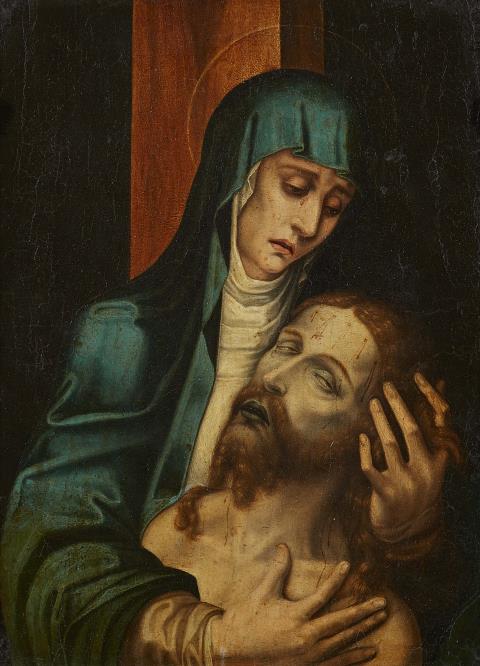

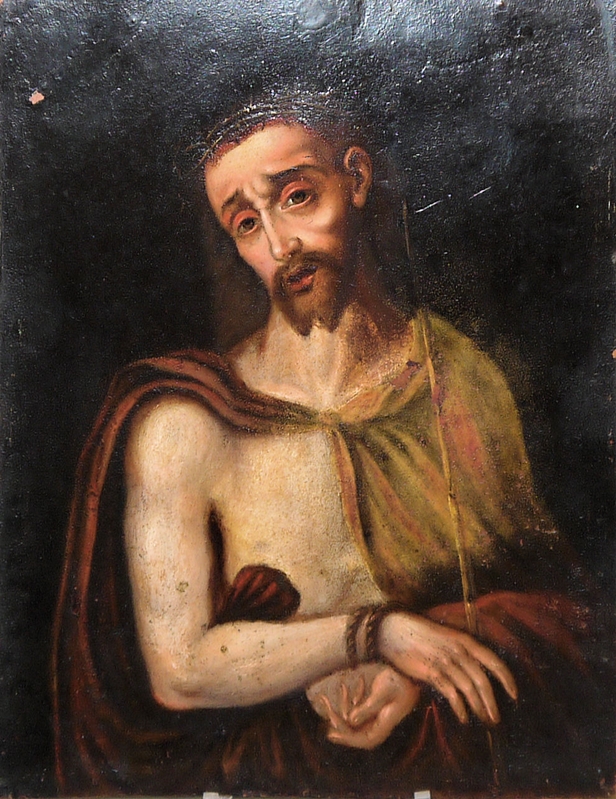
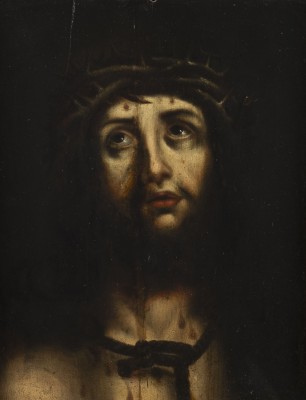

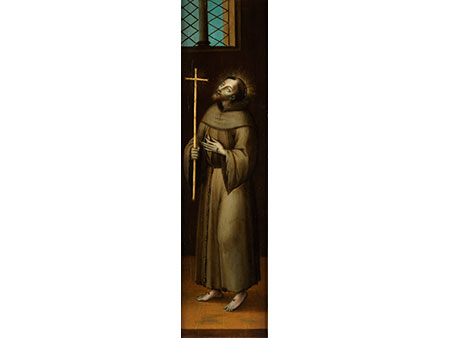
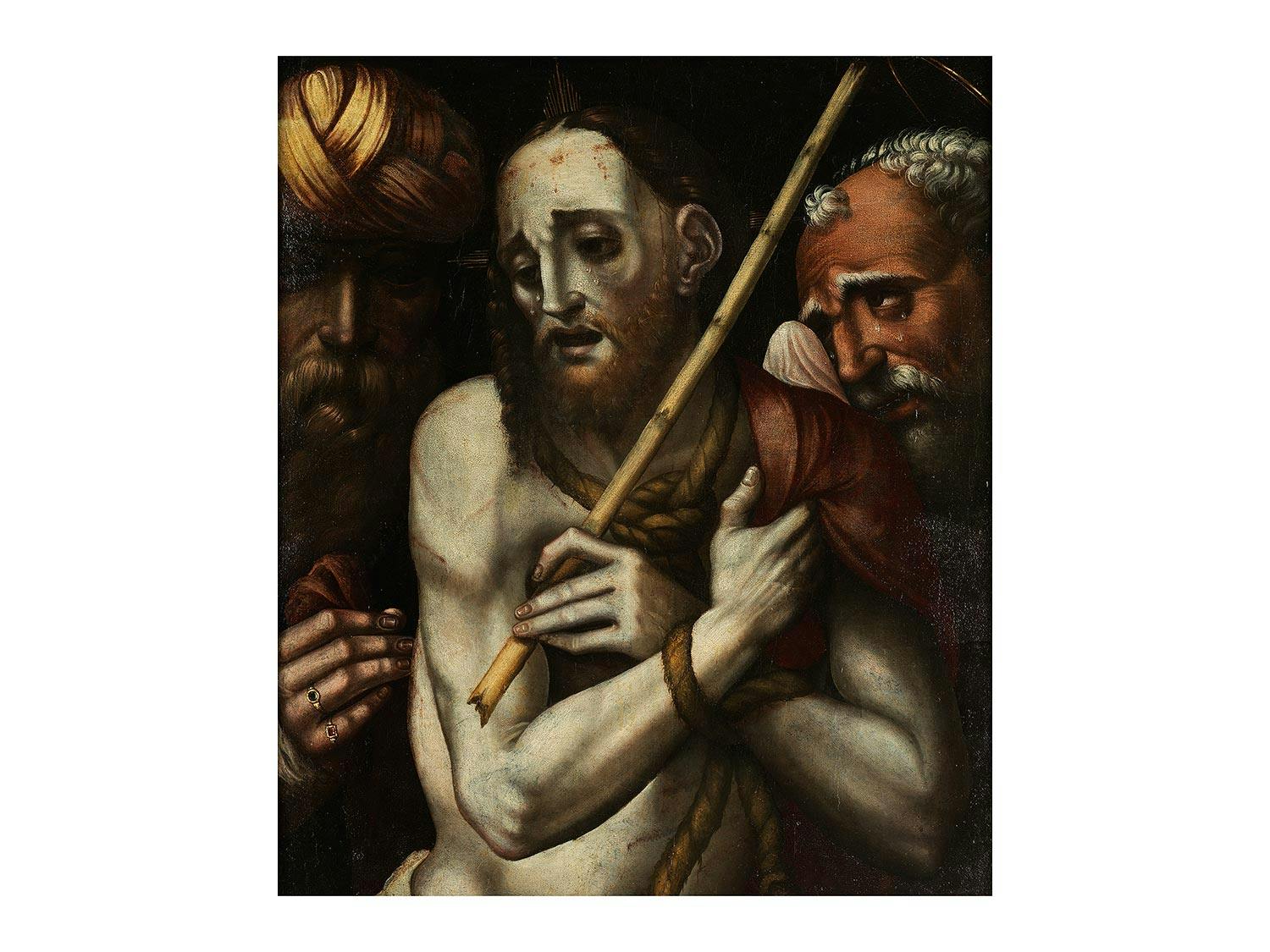
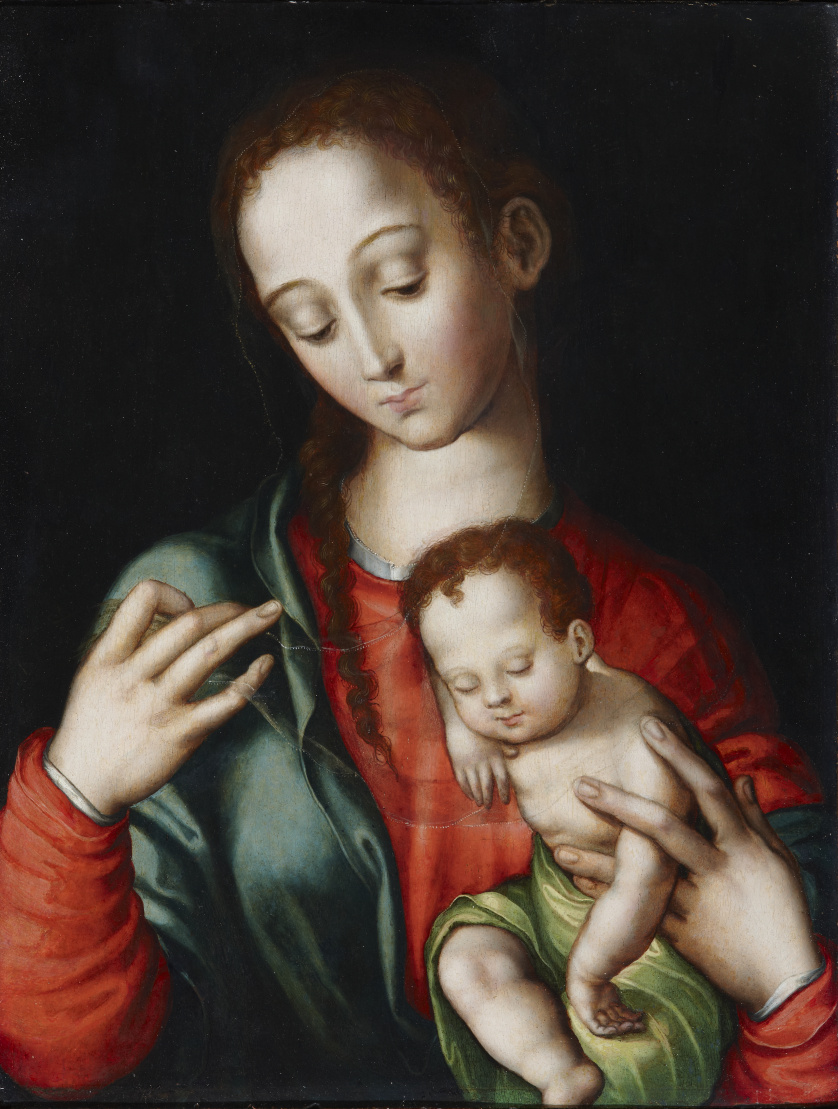




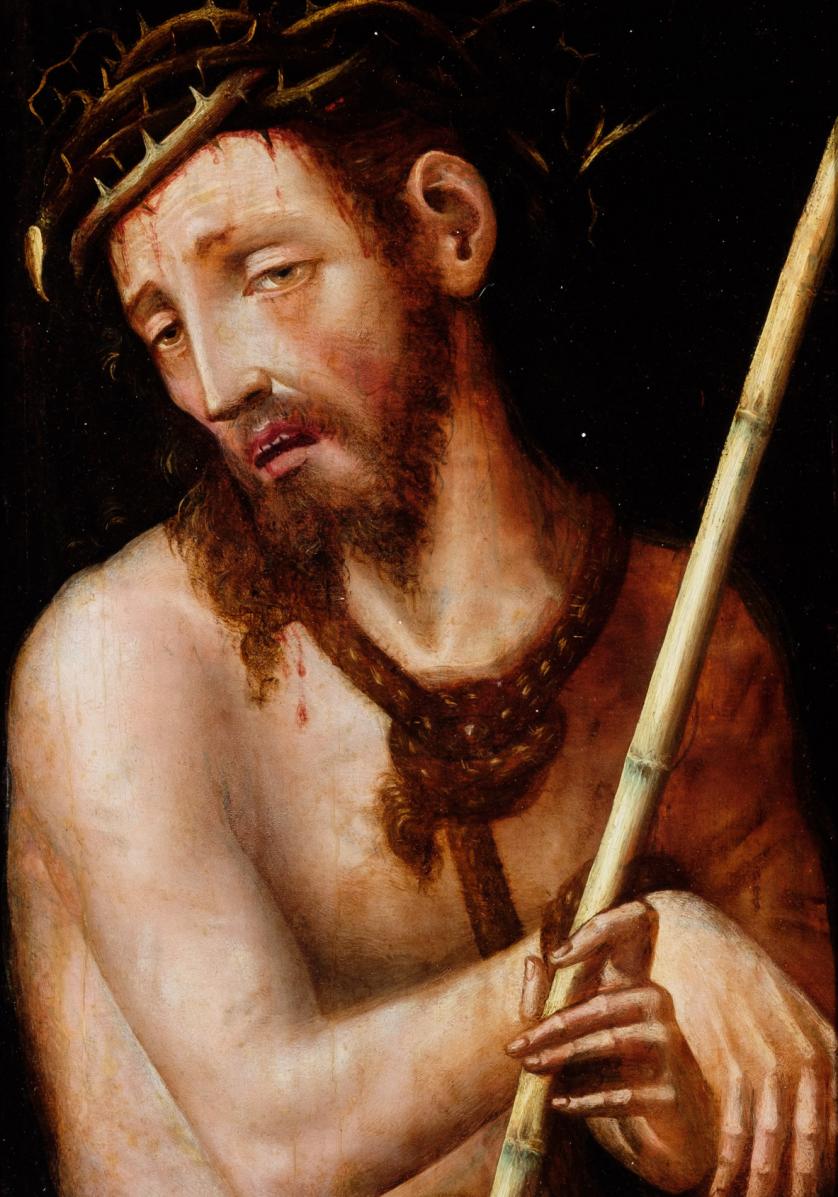

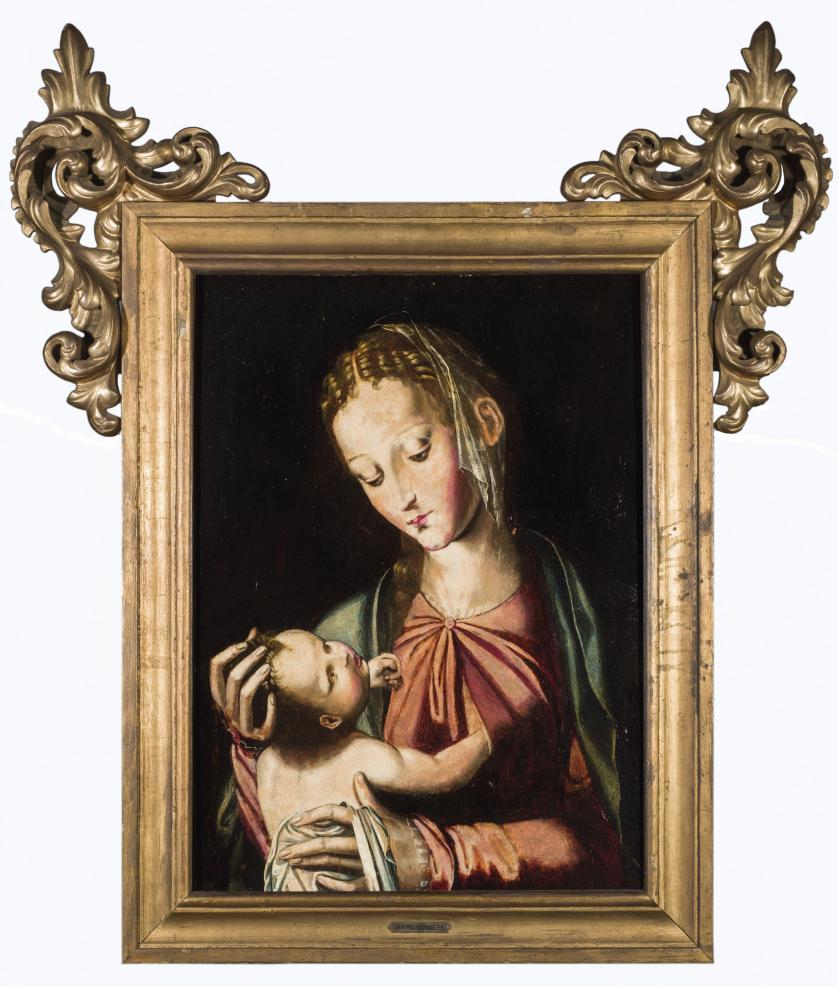
Testen Sie LotSearch und seine Premium-Features 7 Tage - ohne Kosten!
Lassen Sie sich automatisch über neue Objekte in kommenden Auktionen benachrichtigen.
Suchauftrag anlegen